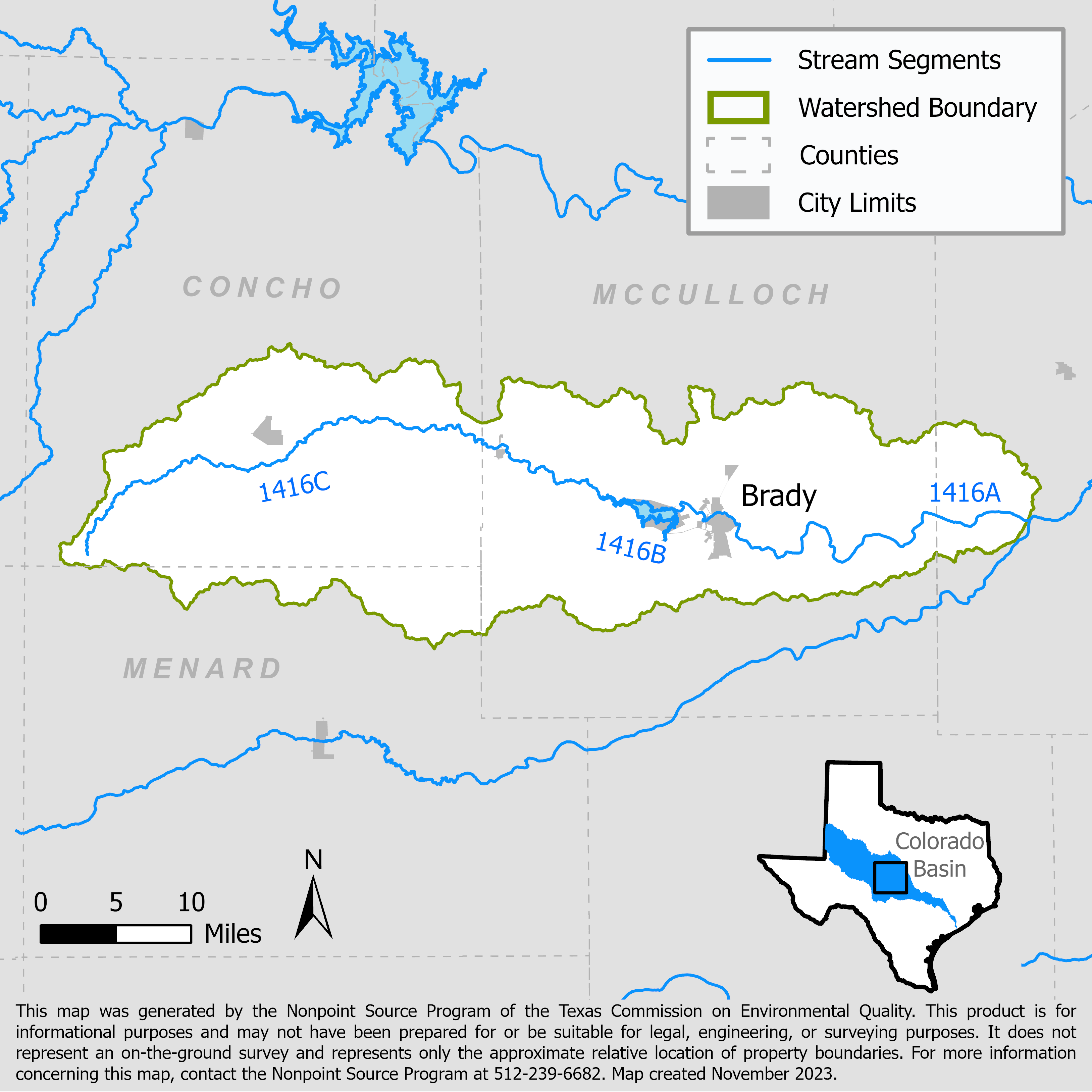Brady Creek: Implementing a Watershed Protection Plan
Upper Colorado River Authority is implementing best management practices to remove debris, sediment, and oil and grease from storm water in the City of Brady and to promote the restoration of Brady Creek.

On this page:
Project Area
River Basin: Colorado
Water Body: Brady Creek (1416A)
Location: Brady and McCulloch counties
Background
Brady Creek, an unclassified water body and a tributary of the San Saba River, has not met state water quality standards for aquatic-life use since 2004 due to low levels of dissolved oxygen. The Upper Colorado River Authority (UCRA) and watershed stakeholders developed the Brady Creek Watershed Protection Plan (WPP) which was accepted by the U.S. Environmental Protection Agency in 2016. The WPP identifies best management practices to increase flow, reduce the amount of pollutants entering Brady Creek, and to raise dissolved oxygen levels that support aquatic life.
Project Descriptions
September 2017 – February 2023
The UCRA implemented several recommendations in the Brady Creek WPP including a vortex hydrodynamic separator and an education and outreach program.
Vortex hydrodynamic separators are flow-through structures used to remove sediment and other pollutants from stormwater. UCRA installed a separator in Subbasin I, the largest contributor of urban runoff in the watershed. UCRA conducted stormwater monitoring to determine the hydrodynamic separator's effectiveness in reducing pollutants released into the creek.
September 2023 – August 2027
The UCRA will install a second vortex hydrodynamic separator included in the Brady Creek WPP and will continue an extensive education and outreach program. Based on modelling conducted during WPP development, installation of one separator in this subbasin will reduce total suspended sediment and biological oxygen demand loadings by 50 percent. The monitoring and installation of the secondary vortex hydrodynamic separator will provide valuable data for adaptive management planning and will serve to catalyze further adoption and implementation of the remaining management measures recommended in the WPP
For More Information
UCRA's Brady Creek WPP Implementation webpage
To find out more about the NPS Program, call 512-239-6682 or email us at nps@tceq.texas.gov.

 Back to top
Back to top